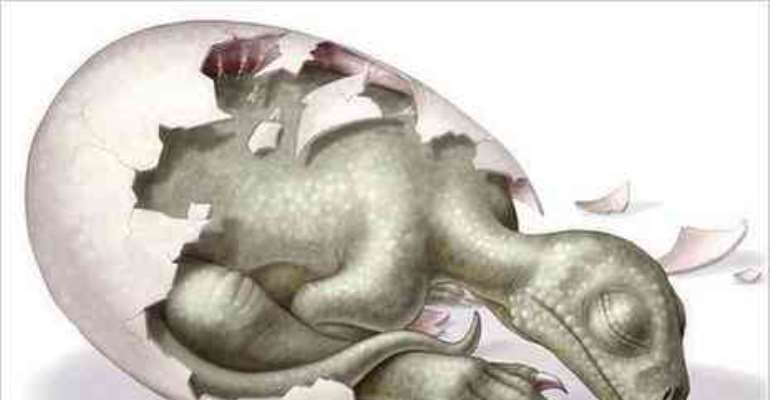EGGS WITH THE OLDEST KNOWN EMBRYOS OF A DINOSAUR FOUND

Palaeontologists have identified the oldest known dinosaur embryos, belonging to a species that lived some 190 million years ago.
The eggs of Massospondylus, containing well-perserved embryos, were unearthed in South Africa back in 1976.
The creature appears to be an ancestor of the family that includes the long-necked dino once known as Brontosaurus.
Continue reading the main story
'
Start Quote
This project opens an exciting window into the early history and evolution of dinosaurs'
Robert Reisz
University of Toronto Mississauga
The study in the Journal of Vertebrate Paleontology also sheds light on the dinosaurs' early development.
The researchers used the embryos to reconstruct what the dinosaurs' babies might have looked like when they roamed the Earth.
Having studied the fossilised eggs, the team, led by Professor Robert Reisz of the University of Toronto Mississauga in Canada, discovered that the embryos were the oldest ones ever found of any land-dwelling vertebrate.
“This project opens an exciting window into the early history and evolution of dinosaurs,” said Professor Reisz.
“Prosauropods are the first dinosaurs to diversify extensively, and they quickly became the most widely spread group, so their biology is particularly interesting as they represent in many ways the dawn of the age of dinosaurs.”
'Awkward' bodies
Massospondylus belonged to a group of dinosaurs known as prosauropods, the ancestors of sauropods – huge, four-legged dinosaurs with long necks.
Having studied the tiny (20cm-long) skeletons, the researchers noted that the embryos were almost about to hatch – but never had the chance.
While the embryos are only about 20cm long, the adults are thought to have reached some five metres in hight
Interestingly, the report says, the embryos looked quite different compared to the adult animals.
Once hatched, the babies would have had rather long front legs, meaning that they would have been walking on all fours rather than on two legs like the adults.
The embryos' heads were also disproportionally big, but it is believed the adult Massospondylus, which were about five metres in length, had relatively tiny heads and long necks.
The little ones' anatomy would have changed with age.
The paper stated that the rather awkward body of the embryos suggested that just like humans, the hatchlings would have required parental care – and if in this case, it would be the earliest known example of parental care.
